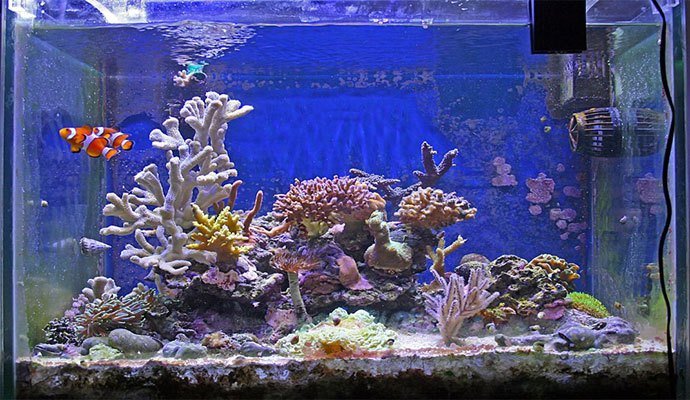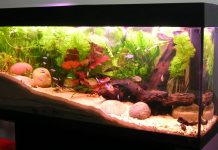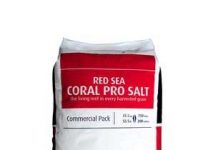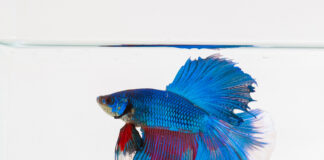Starting your very first saltwater aquarium can be an exciting time. However, whether youâre a beginner starting up a new tank or an experienced reef hobbyist, know that it takes more than just dumping several gallons of saltwater into a glass container.
You may have heard experts or other hobbyists suggest cycling an aquarium. But, how to cycle an aquarium, exactly?
In this post, weâll consider the process of cycling, its significance, and the different methods you can apply to cycle your saltwater aquarium, correctly.
More…
The Nitrogen Cycle
The nitrogen cycle is vital for the enclosed ecosystem of an aquarium. In this cycle biological waste (read: fish poop) is converted into ammonia,nitrite, and then nitrate by beneficial bacteria.
Significance

Ultimately, the nitrogen cycle facilitates the establishment of these important microorganisms in the aquarium itself as well as in your filter media. In turn, the microorganisms neutralize toxic ammonia, nitrite, and nitrate.
In addition, without these organisms, your tank will quickly turn into a cesspool of fish waste. Naturally, this dirty environment will not be healthy for all life in your aquarium and can eventually lead to a mass die-off of marine life.
The Stages of Cycling
The nitrogen cycle consists of four stages, starting with the introduction of ammonia until the development nitrate in the water.
Stage 1
Fish waste and uneaten fish food decompose into the soil and then break down into ammonia.
Stage 2
Microorganism in the form of Nitrosomonas starts to develop. Also, these bacteria effectively process the ammonia, converting it into nitrites. Nitrites, however, are still toxic to your aquarium.
Stage 3
Fortunately, a new group of bacteria, called nitrobacteria start to form. Also, the nitrobacteria then eventually process the toxic nitrite into nitrate. Although nitrates are less harmful to your fish, high nitrate concentrations will still be unhealthy. Hence, youâll still need to monitor your tankâs nitrate levels.
Stage 4
Finally, you would cycle out nitrate either through routine water changes or via the introduction of nitrate-processing marine life. In addition, these nitrate-eaters eventually convert nitrate into harmless nitrogen.
The microorganisms include live aquarium plants as well as the denitrifying bacteria present on live rock and live sand.
Ultimately, you can consider your tank âcycled.â
The 4 Methods on Cycling a Saltwater Aquarium

Your initial goal would be to introduce ammonia into the reservoir. The ammonia, in turn, will help develop the bacteria that will start the nitrogen cycle.
Naturally, youâll need to monitor the ammonia levels in your tank. Hence, you might want to acquire an ammonia water test kit for this purpose.
However, I suggest just getting a saltwater master test kit since youâll eventually need to measure, pH, nitrite, and nitrate levels, anyway.
Alternatively, you can use an Ammonia Alert Device from Seachem. This particular water tester consists of a plastic card that turns dark in the presence of ammonia in water.
Preparations:
Before utilizing any of the methods below, make sure to follow these preparations first.
- Fully set up your aquarium: ensure that you add dechlorinated saltwater and that all systems are running. If youâre using the Ammonia Alert, you should add it to the tank at this point.
- Maintain water temperatures from 76-84°F.
- âWater test kits
- âBuckets for water changes
- Optional: Seachem Ammonia Alert
Methods:
I. Via ammonia

Youâll need:
- 100% ammonia
- Dropper
Steps:
- Using your dropper, mix five drops of ammonia for every 10 gallons of water daily.
- Next, test the water every day until you detect the presence of nitrites.
- Once nitrites develop, you should reduce the daily ammonia drops to three.
- âAfterward, repeat process until you get nitrate readings.
- Once you get nitrate measurements, change 30% of the aquarium tank.
- Youâve successfully cycled your tank.
II. Via a few hardy fish

Youâll need:
- A tough and hardy fish such as a White Clouds as well as Zebra Danios.
- Fish food
Steps:
- Acclimate your chosen fish
- Then, add your fish to the aquarium after acclimatization.
- Next, feed the fish sparingly to avoid toxic ammonia levels.
- Change 30% of the tankâs water every 2-3 days
- Monitor ammonia as well as nitrite levels regularly. Increase the frequency of water changes if these elements reach unsafe levels.
- Check for the presence of nitrates
- Once ammonia and nitrite levels are stabilizing at low or zero levels and you detect nitrate readings, youâve successfully cycled your tank and may now gradually add in new fish.
III. Via fish food

Youâll need:
- Fish food
Steps:
- Sprinkle a few flakes of fish food every 12 hours.
- Wait for two to three days for the food to decompose and release ammonia. Then, measure the ammonia levels in the water with your test kit.
- âKeep the ammonia levels at 3 ppm. Increase or decrease the amount of fish food you add accordingly.
- âAfter seven days, check for the presence of nitrite in the water. Maintain the ammonia levels at 3 ppm.
- When you detect nitrates after a few weeks, then youâve successfully cycled your tank.
IV. Via bacteria from an established tank

Arguably the best and easiest way to cycle a new tank is to add the all-important bacteria from an established aquarium. Moreover, you can choose from multiple media on which to deliver the beneficial bacteria to your new uncycled tank.
Youâll need:
- Gravel, sand, or filter media from an established (and cycled) aquarium
Fish food
Steps:
- Add your chosen media carrying the beneficial bacteria
- Sprinkle a few flakes of fish food daily until you get nitrate readings.
- Once you detect nitrate in the water, then youâve successfully cycled your tank!
Conclusion
The nitrogen cycle and wastewater management are vital for your fish and other marine life to thrive in your aquarium.
Hence, always make sure to cycle a new saltwater aquarium with these four methods. Soon, youâll be on your way to an established tank with a diverse ecosystem!
>>> Read More:
Related Posts:









